SRILANKA HOLIDAYS:
THE ROAD TO MIHINTALE
Mihintale mountain range called
In the mean time the Arahath Mahinda (the name Mahinda is derived from the Hindu name Mahendra, meaning Great Indra, Lord of Heaven according to Hindu mythology) the son of Great Mauryan Emperor Asoka of India had arrived in Lanka together with four other arahaths (supremely enlightened) Ittiya, Uttiya, Sambala, Baddhasala, Pupil priest Sumana Samanera & his nephew layman Upaska Bhandu, his nephew & they having foreseen the arrival of the monarch at the hill, chose to await at the summit of the hill. The king had chased the animal up to the summit, but to his chargin, just on the point of letting fly his arrow, the animal disappeared.
Arahath Mahinda: "Samanas (Buddhist monks) are we, O great king, disciples of the King of Truth. From compassion toward thee are we come hither from Jambudipa. (
King Devanam Piya Tissa: "By what way are you come?"
Arahath Mahinda: "Neither by land nor by water are we come” ( Mahavamsa Ch XIV)
The Mahavamsa OR The Great Chronicle of
Translated from Pali into English by Dr. Wilhelm Geiger, Ph. D
Mahavamsa tika.
Arahath Mahinda, was thirty two years of age at his arrival to
Arahath Mahinda, the Great Sage, wishing to gauge the intelligence of the King so that the sermons of the profound religion could be accordingly carried out, set up a riddle to the king.
“Of what name is this tree, O king?”
“This tree is named ‘mango’.
“Is there any other mango-trees?”
“There are many mango-trees”.
‘Are there any tree other than this & other mango trees?”
‘There are, Venerable Sir, many trees. They are not mango trees.”
‘Apart from other mango-trees & those which are not mango trees, are there any trees?”
“This mango-tree, Venrable Sir.”
‘You are a wise one, O lord of men. King, have you kinsfolk?”
“There are many, Venrable Sir.”
“King, are there those who are not your kinsfolk?”
“There are many more than the kinsfolk.”
“Could there be any beside your kinsfolk & others”
“Only me, Venerable Sir.”
“Good, you are a wise one, O lord of men.” (16-21)
Mahavamsa Chapters one to thirty seven
Translated by Dr. Ananda W. P. Guruge Ph. D. ISBN -955-20-8963-8
The Cula Hattipadopama Sutta, as recorded in the Majhima Nikaya, the Second Book of the Sutta Pitaka, one of the three divisions of the Tripitaka, the total collection of Buddhist doctrine is written in Pali, is a parable based on the footprints of an elephant.
Ven. Professor Dhammavihari Thera
Never had a missionary such a response. The king & all his followers were there & then converted, & the construction of monasteries & shrines for the relics of the Buddha became the daily occupation of the royal convert. On the mountain were constructed numerous rock cells as home for the faith. Tissa , with two elephants harnessing on a golden plough, marked the boundaries of the lands, which extended over what is now known as
Following the Historical Encounter & the formal introduction of non-violent Buddhism to the
The Asokan edicts in
Ruins of the ancient Ayurvedic hospital (Vejjasala)
Museum
This small museum at the foot of the Mihintale mountain enlightens you of the historic site with findings discovered in the area.
Leaving the hospital & walking towards the foot of the mountain with a height of about one-thousand feet we arrive at the great manmade stairway that leads up to the summit of the hill. The first part of flight of 1840 nicely cut stone stairs are broad, shallow & shaded with venerable old frangipani tree also called ‘temple tree’ (Araliya in Sinhala).
The stairway is the main gateway to the vast monastic settlement. The ruins, intact monuments & renovated monuments, natural rock cells, hydraulic works, stone inscriptions bears testimony to the ancient Sinhalese Buddhist civilization.
The second flight of stairs takes us to another plateau, on which we find ruins of relic house, assembly hall & the refectory.
The third flight takes us to highest plateau called Ambastala, the site of Ambastala Dagoba (sela Cetiya). Out of this plateau spread numerous trials leading to Maha thupa, the largest stup at Mihintale, the Mihindu Seya.
The four projecting front pieces called vahalkadas at the four cardinal directions are richly & variously ornamented with bas-relief. The two pillars at the either end of vahalkada are crowned with pairs of animals: elephants facing east; bulls facing south; horses facing west & lions facing north. While front pieces were found in excellent state of conservation, the Kantaka Dagoba stupa was found in ruins resulting in extensive renovation. The stupa built before the 1st century B. C. is the fourth oldest stupa in Sri Lanka next to three other ancient stupas, namely (prior to recorded history of Sri Lanka, i. e. prior to 543 BC.), Mahiyangana stupa Muthiyangana Vihara (5th Century BC) Somawathiya Chethiya (2nd century BC).
Although Vahalkadas (front pieces) can be seen at most of the stupas at Anuradhapura & Polonnaruwa, at Mihintale, vahalkadas are found only at the Kantaka cetiya.
Easily accessible from the Kantaka Dagoba, among the rock outcrops extending west are located sixty-eight caves with drip ledges & inscriptions. Numerous well-marked footpaths lead us to the caves. Since most of the footpaths follow the edges of the cliff, we must mind the steps.
Most of the inscriptions record that these caves were constructed at the expense of laymen & then gifted to the Buddhist bhikshus (monks). The Mahawamsa (The Great Chronicle) informs us that these rock caves were built during the reign of King Devanampiyatissa.
At the end of the second plateau are the remains of the refectory. As the buildings in Abhayagiri & Mahavihara, the refectory at Mihintale too is equipped with the same astonishing granite troughs called “bat oruva” (meaning rice boats in Sinhala) beyond the central courtyard. Different in shape, one was used for rice & the other one for accompanying gruel, curries & vegetables. Evidence has surfaced that the inside of the granite troughs were covered with a layer of metal. Walking towards them, on your right on the hill side is a small aqueduct, a granite cistern supported on pillars, supplying water for drinking as well as for washing. According to Chinese pilgrim Buddhist bhikku Fa hien, Mihintale was home to 2,000 Buddhist bhikkus. To service the Refectory were many servants whose duties & allowances due to them were minutely defined in the Mihintale Tablets, set up in the vicinity. Among these men were the warder of the refectory, the head of the workers, twelve workers that did the cooking, the worker who procures firewood & cooks food, and the worker who brings firewood but does not cook. & the worker who cooks on firewood fetched by others.
Between the Refectory (Danasala) & the Assembly Hall are the ruins of what was a Dage meaning Relic House in Sinhala. On each side of the main entrance two huge slabs of granite measuring seven feet by four feet are seen. The tablets, well known by the name of “Mihintale Tablets”, are 10th century inscriptions of King Mahinda have attracted so much attention from the time of their discovery, owing to the interesting account of administration & inner life of a Buddhist monastery narrated therein.
The first portion narrates the rules & regulations of the monastery, & the second part deals with the payments of servants & laborers. The rules give strict injunctions as to the payment of all work either by cash, food stuff or land grants; & the importance of the tablets lies in the fat that these show a truce & vivid picture of a well conducted Buddhist monastery of the tenth century.
Slab A, Lines 25-26
Slab A, lines 29-30
Slab B, lines 35
Slab B, LINES 35-36
Major C. M. Enriques of Colonial Ceylon narrates: “the most pleasing of all these monuments is the Lion
The surplus water from Cobra Pond is led down the hill through granite pipes some of which are still visible, & falls into a small rock-cut cistern through the mouth of exquisitely sculpted life size lion’s head. Hence is the name Lion pond. The small but pleasant site is half constructed with stone blocks & half carved out of a rocky cliff. It is a square of about 1.8m & a bit more than 2m deep. The pond is supplied with water flowing down from the Naga Pokuna (the Cobra pond) through granite pipes.
On the right of the Mihintale tablets & at the foot of the flight of stairs to the Ambasthala Plateau is located the assembly hall of the monastery. There is an entrance on each of the four sides & the centre of the hall is built with an elevated platform where senior monks were probably seated during the assemblies. Forty eight stone pillars supporting the roof still survive.
Having seen everything on the lower terrace now we take the stairs leading further up the mountain. Towards the top of the stairs the pilgrim will notice a path leading off to the right. Proceed along it through the jungle & we arrive at the Naga Pond, an exquisite rock-cut pond with surprising fresh water.
On the dark rockface, rising from the edge of the water cave fashion, is carved a huge seven-headed cobra in low relief on the far end. These five & seven-headed nagas are usually found carved in relief or whole near ponds & tanks or other places connected with water. Near sluices of the rainwater reservoirs of
The water from this fascinating pond is led down the hill through granite pipes some of which are still visible & falls into a small rock-cut cistern through the month of sculpted lion’s head in to the Lion’s Pond. So called because of the huge seven headed Naga calved out of the cliff at the back of the pond. Originally there must have been a small natural pond here but as the demand for water on Mihintale grew this was enlarged and deepened by constructing an embankment around it. The Mahavamsa calls this place the Nagacatukka and says that Mahinda used to bathe here. The large area of exposed rock above the pond acted as a catchment area. Stone pipes from the Naga Pond fed the Lion Fountain on the lower terrace. The water in the Naga Pond is dark but clean and can offer the pilgrim a refreshing swim.
Ambastala Dagoba stupa (Sela Chetiya stupa)
This upper terrace, called Ambastala, is shaded by coconut, tamarind and jack trees.
Sela Chetiya is a small rock stupa at the site of the famous mango tree which was the starting point of famous Mango riddle put forth to King Devanpiyatia by Arahath Mahinda. It was at this site the great sage Arahath Mahinda delivered his first sermon in the island, Cula Hatthipadopama Sutta,
This small dagaba in the centre of the plateau of the Mihintale hill is surrounded by two concentric circles of octagonal stone pillars of same type as those at the Thuparama Stupa. The stupa is in fact a vatadage or circular relic-house. Its current pillars dating from the 7th century had once in the course of history supported a roof. Some of the relics of Arahath Mahinda are said to be enshrined in this stupa. Archeological evidence leads to the conclusion that the original roof was carved out of wood. It is believed that Buddha himself spent some time on this very spot on the occasion of his third visit to
We go along the left side of the Ambastala Dagaba heading east & walk through the group of ancient dwellings of monks. Then we climb down the stairs near a big rock & walk down along this path for about 100m to reach a group of rocks with a flight of metal stairs. The bed is in a small cave formed by a gap between two big rocks. Supremely enlightened Mahinda spent the remaining years of his life in Mihintale propagating Buddhism in the island till his final extinction (rather than death) in 259 BC. Following the cremation of Maha thera Mahinda’s ashes were enshrined in stupas throughout the country including one on Mihintale itself.
South at the foot of Ambastala Dagoba on the platform next to the Ambastala Dagaba a polished stone has been laid down to mark the precise spot where Mahinda, the son of the Emperor Asoka of India sat & made his historic sermon. It is fenced by a metal enclosure on which devotees hang prayer flags & other offerings.
Forming a background of towering strength, the huge granite boulder called Aradhana Gala (Invitation Rock in Sinhala) rises precipitously behind Ambastala stupa. This is the location Mahawamsa (The Great Chronicle) of
Coming down from the Aradhana Gala, towards the left are seen shallow rock-cut steps leading up to the picturesque Maha Seya. Its conspicuous white dome at the top of the Mihintale Hill can be seen from far away. The Maha Seya was built by King Devanampiya tissa in 243 BC. It is believed to contain a single lock of hair (Urna Roma Datu) that grew between the eyebrows of Buddha, one of the 32 unique physical signs of a Buddha.
The stupa larger than the Thuparama was renovated at the beginning of the first century by the King Mahadathika Mahanaga(560-563 AD).The legend says that the King himself would come & stay prostrated when the brickwork, due to the sharp slope of the hill, would not hold firm. Then again the stupa was rebuilt by Parakaramabahu the Great (1164-1196 AD).
It was partially destroyed by marauding Dravidian Invaders from South India was repaired by the prisoners at
Southern race - Maruading Dravidian invaders from
Gangetic race - Aryan Sinhalese settlers of the
For the complete narration of 2550 years of unbroken recorded Agrarian & Buddhist civilization of Sri Lanka, Sinhalese & the destruction of capitals Anuradhapura, Polonnaruwa by marauding Dravidian invaders from Southern India please refer Mahawamsa (The Great Chronicle) & visit Anuradapura, Polonnaruwa, Sigiriya, Mihintale, Yaphuwa & numerous other historical & cultural sites of Sri Lanka.
Being on the highest point of all the sites, this little dagaba, is believed to enshrine the relic of Maha thera Mahinda. This modest dagba, kept as it is discovered, without being restored, is situated west from the massive Maha Seya. On the ridge extending south-west towards its highest point is another dagaba, the Et Vihara.
A strenuous climb of 600 steps from Naga Pokuna leads up this inner temple, at the highest elevation in Mihintale. Though the small stupa is not very impressive, it is worth go a long way to see the enchanting panorama suddenly unfold before our eyes, from this
Archaic Brahmi scripts (2nd or 3rd century BC) have been found on some bricks in the foundation. During excavation works, an unknown old type of earthen ware was discovered. It was a reliquaries’ casket made of three compartments in which were found ashes & bones as well as golden reliquary in the shape of a dagaba from
In between the main stairway on the eastern slope & the Kaludiya Pokuna are the ruins of Indikatu Seya stupa.
The interest of this small dagaba of a height of 30 feet lies in its particular style. It is constructed on a raised platform paved with stone slabs. Its dome is partly covered with carved granite, a feature which is not common on other dagabas of the region. It is about 6m in diameter.
The discovery of copper plates with Sanskrit inscriptions written with Sinhalese characters of the 8th-9th century asserts its Mahayanism, a
At the foot of western slope of Mihintale hill is located Kaludiya Pokuna meaning “The Black Water Pond” in Sinhala. The reason for the appellation is not known. Kaludiya pokuna, more like a reservoir, is the largest pond of the hydraulic system of the site. The layout and structure of Kaludiya Pokkhana complex has much in common with monasteries at Ritigala and Arankale and as such, it is believed to be a sanctuary of the Pansakulakas sect of the Mahayana
Rajagiri Kanda meaning Royal Rock Hill in Sinhala is located about half a kilometer from the entrance to the Kaludiya Pokuna. There is not much left today of the monastery which was located at the foot of the Rajagiri Kanda except for a stone door frame, two guardstones & a Nidhi or guardian of the treasure of the god Kuvera, the God of wealth.
Scattered all over the hill, which rises prominently above the surrounding jungle, is a series of natural caves once home to enlightened Buddhist bhikshus.
One of the caves was occupied by an elder monk named “Dharma-gupta”. The pre-Christian Brahmi inscription incised below the drip ledge of his cave reads: Damaguta Thera Lena, the
“… Forty le to the east of the Abhayagiri Viharae is a hill, with a vihare on it, called the Cheitiya, where there may be two-thousand monks. Among them there is a Sramana of great virtue, named Dharma Gupta, honoured & looked up to by all the kingdom. He has lived for more than fourty years in an apartment of stone.”… “And, such is his compassion, he can make serpents & mice live together without injuring each other.”
Fa Hien
Inscriptions herein narrate that among benefactors who made these natural caves habitable to humans & gifted them to the Buddhist bhkishus was a Pramuka (chief) & his wife by the name Sena. One of the inscriptions was written in Nagari script (8th-11th century) providing the definite evidence the site was once under the influence of the Mahayana
The June moon ushers in the Poson festival, which is held in commemoration of arrival of Buddhism to









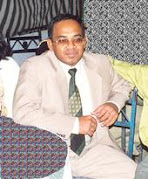













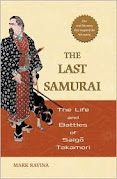


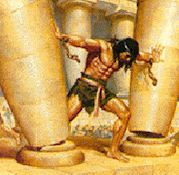

















































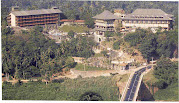








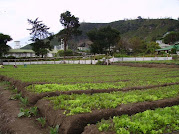














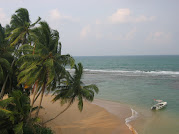












0 Comments:
Post a Comment